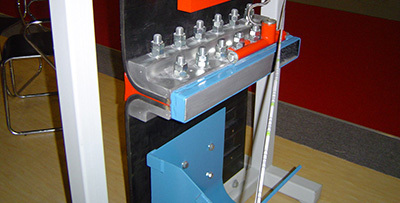News Center
Hezi technology focuses on the research and development of "rapid seamless conveyor belt joint sleeve" innovative technology project

NEWS CENTER

News Details
Understanding Durable Conveyor Rubber Belt Joints: Key Insights for the Chemical Industry
Release time:
2025-06-10
In the chemical industry, the importance of efficient material handling cannot be overstated. One vital component of this process is the conveyor system, which often utilizes durable conveyor rubber belts. The joints of these belts play a critical role in ensuring seamless operations. Understanding the types and advantages of durable conveyor rubber belt joints can greatly enhance operational effi
In the chemical industry, the importance of efficient material handling cannot be overstated. One vital component of this process is the conveyor system, which often utilizes durable conveyor rubber belts. The joints of these belts play a critical role in ensuring seamless operations. Understanding the types and advantages of durable conveyor rubber belt joints can greatly enhance operational efficiency and reduce maintenance costs.
Durable conveyor rubber belt joints are designed to withstand the rigors of continuous use in demanding environments, such as those found in chemical processing plants. These joints connect two ends of the conveyor belt, creating a continuous loop that allows for the smooth transportation of materials. The durability of these joints is essential, as they experience substantial wear and tear due to heavy loads, abrasive materials, and environmental conditions.
There are various methods of creating durable joints for conveyor rubber belts, including mechanical fasteners, vulcanization, and cold bonding. Mechanical fasteners are typically used for their ease of installation and the ability to replace them quickly. However, they may not provide the same level of strength and durability as other methods. Vulcanization, a more permanent solution, involves the chemical bonding of the rubber, resulting in a joint that is strong and resistant to wear. Cold bonding, on the other hand, uses adhesives to join belt ends and is suitable for situations where heat application is not feasible.
Selecting the appropriate jointing method for your conveyor rubber belt is crucial. Factors such as the type of materials being transported, the operating environment, and the expected load should all be considered when making this decision. Additionally, a well-maintained conveyor system with high-quality joints can lead to increased uptime and reduced operational costs, making it a worthwhile investment for any chemical processing operation.
To ensure optimal performance, regular inspections of the conveyor belt joints are recommended. Signs of wear, such as fraying or separation, should be addressed promptly to avoid unexpected downtimes. Maintaining a comprehensive maintenance schedule can help identify potential issues before they lead to significant failures.
In conclusion, understanding durable conveyor rubber belt joints is essential for professionals in the chemical industry. By recognizing the different types of joints and their respective advantages, companies can enhance their material handling processes, ensuring greater efficiency and longevity. Whether opting for mechanical fasteners, vulcanization, or cold bonding, the key is to choose the right method suited for specific operational needs, thereby maximizing productivity and minimizing downtime.
Durable conveyor rubber belt joints are designed to withstand the rigors of continuous use in demanding environments, such as those found in chemical processing plants. These joints connect two ends of the conveyor belt, creating a continuous loop that allows for the smooth transportation of materials. The durability of these joints is essential, as they experience substantial wear and tear due to heavy loads, abrasive materials, and environmental conditions.
There are various methods of creating durable joints for conveyor rubber belts, including mechanical fasteners, vulcanization, and cold bonding. Mechanical fasteners are typically used for their ease of installation and the ability to replace them quickly. However, they may not provide the same level of strength and durability as other methods. Vulcanization, a more permanent solution, involves the chemical bonding of the rubber, resulting in a joint that is strong and resistant to wear. Cold bonding, on the other hand, uses adhesives to join belt ends and is suitable for situations where heat application is not feasible.
Selecting the appropriate jointing method for your conveyor rubber belt is crucial. Factors such as the type of materials being transported, the operating environment, and the expected load should all be considered when making this decision. Additionally, a well-maintained conveyor system with high-quality joints can lead to increased uptime and reduced operational costs, making it a worthwhile investment for any chemical processing operation.
To ensure optimal performance, regular inspections of the conveyor belt joints are recommended. Signs of wear, such as fraying or separation, should be addressed promptly to avoid unexpected downtimes. Maintaining a comprehensive maintenance schedule can help identify potential issues before they lead to significant failures.
In conclusion, understanding durable conveyor rubber belt joints is essential for professionals in the chemical industry. By recognizing the different types of joints and their respective advantages, companies can enhance their material handling processes, ensuring greater efficiency and longevity. Whether opting for mechanical fasteners, vulcanization, or cold bonding, the key is to choose the right method suited for specific operational needs, thereby maximizing productivity and minimizing downtime.
Next Page
Next Page

Recommend News





























